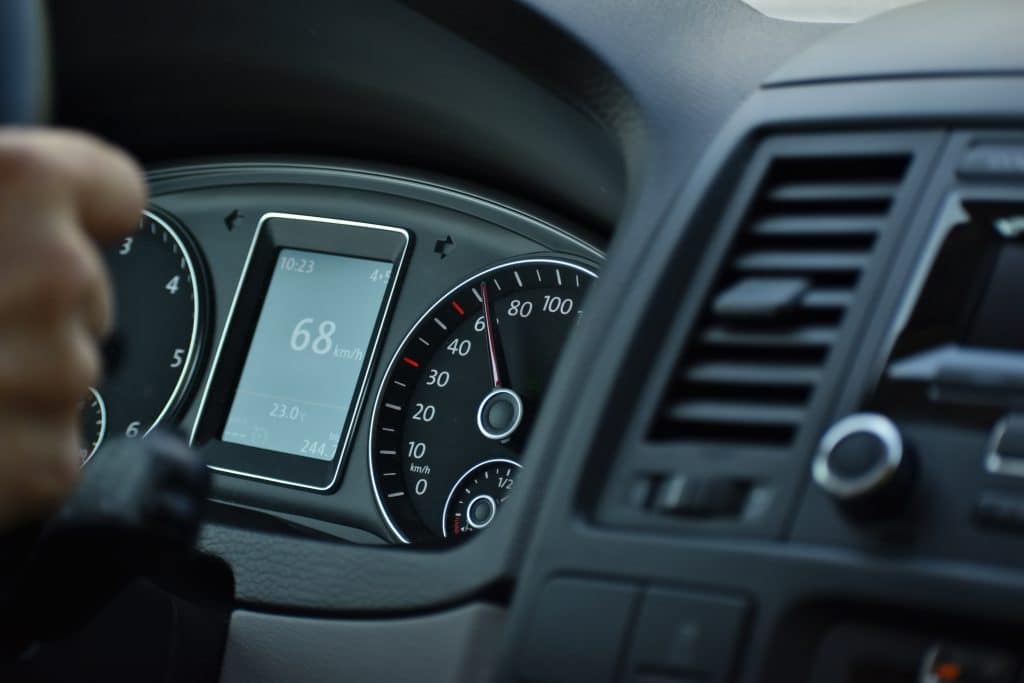Spotting a tampered odometer can save you from purchasing a vehicle with hidden issues and inflated mileage. Digital odometer tampering is, unfortunately, a common trick used by unscrupulous sellers to make a car appear less used than it truly is. In this article, we show you how to check for odometer tampering and equip you with the tools you need to protect yourself.
Whether you’re buying a used car or simply want peace of mind about your current vehicle, understanding how to identify odometer fraud is crucial. Keep reading to learn the essential steps and signs to look out for to ensure you’re getting a fair deal!

What is Manipulated or Reversed Mileage?
Manipulated or reversed mileage refers to the illegal practice of altering a vehicle’s odometer to display a lower mileage than the car has actually traveled. This is often done to deceive potential buyers into thinking that the vehicle is in better condition and has been used less than it really has. This type of fraud can lead to unexpected maintenance costs and a shorter vehicle lifespan for unsuspecting buyers.
What are the Common Signs of Odometer Tampering?
- Inconsistent Odometer Mileage: Digital odometer rollback often results in discrepancies between the displayed mileage and the car’s actual usage. Look for mismatched mileage readings in the vehicle’s service records and maintenance stickers, which can highlight odometer discrepancies.
- Unusual Wear and Tear: Excessive wear on the steering wheel, pedals, seats, or tires inconsistent with the displayed mileage could signal tampering. A low mileage car should show minimal signs of use.
- Electronic Odometer Tampering Signs: Modern vehicles store mileage in multiple systems. Irregularities such as misaligned odometer digits or discrepancies revealed through diagnostic tools can indicate tampering.
- Vehicle History Reports: Reports from services like Carfax may reveal inconsistencies, such as mileage rollbacks or unexplained gaps in the recorded history.
- Dashboard and Instrument Cluster Issues: Signs of tampering, such as scratches, loose fittings, or evidence of the dashboard being removed, often point to odometer interference.
- Suspiciously Low Mileage: Older vehicles or those expected to have significant use but showing unusually low mileage are suspect. Verify the mileage claim through additional checks.
- Signs of Replaced Components: Parts like tires, brake pads, or belts that are replaced much earlier than expected for the reported mileage may signal odometer tampering.
- Seller’s Behavior: A seller unwilling to provide maintenance records or history reports, or behaving evasively when questioned about the mileage, is a warning sign.
Mileage Reversal: How Many Vehicles are Affected by this Fraudulent Practice?
Automotive expert Antoine Joubert estimates that “20% of vehicles over five years old on Quebec’s roads have inaccurate mileage readings”
However, this estimate of 20% is difficult to verify. To date, no measures to counter these scams have been put in place by government automotive organizations (SAAQ, Service Ontario, MTI, etc.). When a vehicle is imported from another province to your province, it must certainly pass an inspection to be registered. However, this brief inspection is mainly visual. The SAAQ (or MTI, Service Ontario, and the other transportation ministries of the Canadian provinces) only ensures that the car meets safety standards.
10 Tips to Avoid Buying a Car with Fake Mileage

1. Avoid Purchasing a Vehicle from the United States or Another Canadian Province
Buying a car from another province or the USA increases the risk of odometer fraud. Rolled-back odometers can misrepresent the actual mileage, hiding extensive wear and tear. Vehicles with falsified records often cost unsuspecting buyers thousands of dollars in unexpected repairs. Protect yourself by purchasing locally and verifying mileage authenticity!
2. Check Average Mileage
On average, a car accumulates 15,000 to 20,000 kilometers per year. All you have to do is calculate the number of years since it was put on the road multiplied by 20,000 km to get the average mileage it is supposed to have for the current odometer reading.
3. Book a Pre-Purchase Inspection with CarInspect
CarInspect takes the stress out of buying a car by offering you reliable pre-purchase inspections. Our certified inspectors provide thorough 170-point evaluations, including vehicle mechanical checks as well as visual checks within 24 hours. Starting at $199, we’re here to guide you every step of the way to ensure you make a confident purchase!
4. Check for Physical Signs of Tampering
Inspect the vehicle for signs of odometer rollback, such as misaligned digits on mechanical odometers or irregular gaps around dashboard components in modern vehicles. Wear on pedals, steering wheels, and tires inconsistent with reported mileage is another red flag indicating odometer rollback fraud.
5. Order a Carfax Vehicle History Report
Carfax provides a comprehensive vehicle history report by gathering information from the Department of Transportation, as well as from dealerships and garages. One of its key advantages is that it is fully digital, allowing users to conveniently access maintenance histories and inspection records online. However, despite these resources, it is not possible to guarantee with complete certainty that an odometer has not been tampered with.
6. Inspect Maintenance Records
Request the vehicle’s service and maintenance records to verify consistent mileage progression. Reputable mechanics typically record mileage during services, so gaps, irregular increments, or missing records could indicate tampering.
7. Use Diagnostic Tools
Modern vehicles store true mileage data in multiple systems, which can be accessed using diagnostic tools. Take the car to a trusted mechanic to cross-check odometer readings against computer-stored data for consistency.
8. Do a Test-Drive and Analyze the Vehicle Condition
A test-drive can reveal inconsistencies between the car’s reported mileage and its performance. Excessive wear in the engine, brakes, or suspension for low odometer readings may point to tampering. Use this opportunity to evaluate the reliability and match the condition to the claimed mileage.
9. Be Cautious with Suspiciously Low Prices
A deal that seems too good to be true often is. Vehicles priced significantly below market value for their age and condition may have hidden issues, such as falsified mileage. Research comparable models to ensure pricing aligns with the car’s history.
10. Ask Direct Questions to the Seller
Directly question the seller about the vehicle’s mileage history, maintenance, and past ownership. Watch for evasive answers or reluctance to provide supporting documents, as these may indicate dishonesty.
Book a Pre-Purchase Inspection to Ensure Your Vehicle’s in Good Condition
At CarInspect, we offer reliable mobile pre-purchase inspection services across Canada. Our certified inspectors thoroughly check and identify any damage history or maintenance issues. With our detailed report, you can make informed decisions, giving you peace of mind and helping you avoid costly mistakes when purchasing a used vehicle. Plus, we offer a 90-day used car warranty after an inspection which is applicable on purchases and sales between individuals, and to a dealership.










